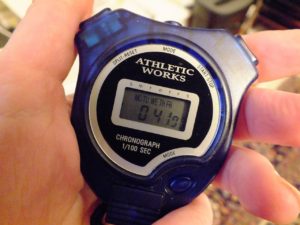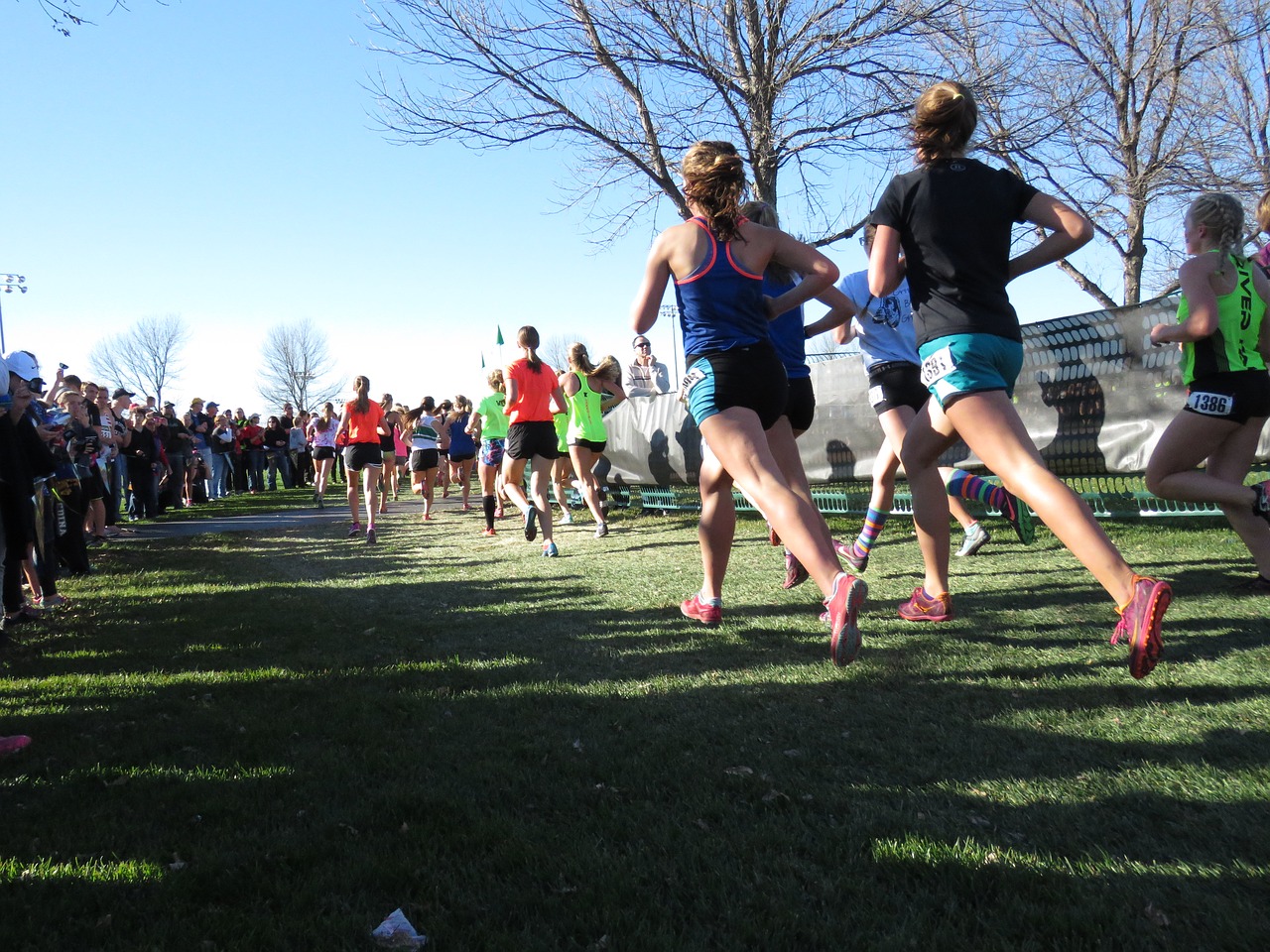The 5K spring racing season is finally upon us! I have a true love/hate relationship with the 5K. It pushes me further than I’ve thought possible, but it’s just so dang painful! I don’t know how you guys do it. That is a freaking.hard.race.
One of the things I’ve noticed with 5K runners, though, is not enough 5K-specific training. If the 5K is your jam, then own it! Here’s my three favorite 5K speedwork workouts to help you find that right balance of stamina and power to speed through those 3.1 miles.

Three 5K Speedwork Workouts
1. Tempo Runs
While not speedwork by the strictest definition of the word, I would be totally amiss if I didn’t discuss tempo runs. They are the simplest way to improve your speed endurance when it comes to the 5K distance (and many other popular distances).
A tempo run pushes back your lactate-threshold, which is the point where your body starts going topsy-turvy, making more waste products than it can dispose of, fatiguing, and throwing you signals to slow down. By pushing that threshold back, you can run faster for longer before fatigue starts trashing you. It also teaches you how to mentally handle that threshold, which is beyond important in the 2nd mile of a 5K when you’re hurting and want to stop.
Start with a warm up jog, then 15 minutes of tempo pace running, followed by a cool down jog. From week to week, you can incrementally increase your tempo time to 30 minutes or so. What is your tempo pace? It’s the pace at which you could race for 1 hour — but the meat of the workout won’t be that long.
Use tempo runs along with hills and fartleks to build your base phase before you do advanced speedwork.
Related Reading:
2. Mile Repeats
 Mile repeat workouts are mile long intervals of faster running with recovery time in between each mile. This faster running can be your tempo pace, 10K pace, or even your 5K pace. Walk or jog for 2-4 minutes between each mile.
Mile repeat workouts are mile long intervals of faster running with recovery time in between each mile. This faster running can be your tempo pace, 10K pace, or even your 5K pace. Walk or jog for 2-4 minutes between each mile.
The 5K pace mile repeats are a hard workout, but a major confidence booster. They allow you to hone in on your race pace, encourage muscle memory and mental fortitude. Injecting those jogging breaks allows you to work at 5K pace without doing a full-out race effort.
Remember to do a long warm up before, including some strides and running drills. Start with two or three one-mile repeats. If you want to build toward more mile repeats, slow down to 10K or tempo pace and work your way to six one-mile repeats. Also, while it may seem counterintuitive, leaning toward the shorter recovery times between repeats will force your body to properly manage energy and decrease your injury risk.
3. 400 Meter Intervals
When you’re training for a race, you want to put in a lot of miles slower than goal pace to build aerobic endurance, a few miles at goal pace so you can lock in how it feels, and a few miles faster than goal pace so that you become more efficient at goal pace. With 400 meter intervals, you’ll be running faster than your 5K pace. They are a great “short” interval with possibly less injury risk than unsupervised shorter sprints.
400 meter intervals will increase your power, improve leg speed, and sharpen you for the race.
Start at 4 or 6 intervals with a 1-2 minute recovery in between. Build toward more reps congruent with your skill level. Use the “Training Paces” tab in McMillan’s running calculator for a guideline time based on one of your recent race times (or reach out to me for guidance at rebekah@runawayfromzombies.com).
P.S. – A lot of running paths are marked in quarter miles, which is about 400 meters, so you don’t necessarily need access to a track to run 400s.
Check out: my first attempt at speed intervals.
A Quick Note on Speedwork
Speedwork has great benefits and it’s quite fun, but it also carries a higher risk of injury.
If you run less than 20 miles a week, haven’t recently logged a few hundred miles, or are recovering from an injury – DO NOT attempt these 5K speedwork workouts. Gently fold in speed into your base phase with fartleks, strides, and tempo runs.
Additionally, shorter intervals of speedwork (faster running) are riskier than longer intervals. So make sure to balance the relevancy, benefits, and risk. Long distance runners won’t receive the full benefits of short sprints, but they could definitely receive the full injury risk.
Putting It All Together

Share on social media!
In conjunction with long runs and supporting base mileage, you could devote one day of the week to these 5K speedwork workouts.
For the first 3-4 weeks, do a tempo run to push back your lactate threshold and build your speed endurance. For the next 3-4 weeks, do mile repeats at your 5K pace. And for the last weeks of your training program, do 400 meter intervals to increase leg speed and power.
5K speedwork workouts are hard and you will need to repair to get the most out of them. Remember to add in cut-back weeks to give your body time to recover while remaining active. Keep the same speedwork during cut-back weeks, but decrease distance. Fold in strides throughout your week to keep your legs moving fast so you’re not tempted to push hard during your easy runs.
If you want a custom training plan for your 5K season, check out my services here. Also, as of April 2017, I’m accepting a limited number of coaching clients. If that is something you are looking for, check out my page here.





Для тех, кто интересуется инвестициями, маркетплейс предлагает информацию о депозитах и накопительных счетах. Выбирайте лучшие инструменты для сбережения и увеличения капитала.
банки Казахстана Микрокредиты .
Онлайн казино с широким выбором аркадных игр | Новые аркадные игры каждую неделю | Аркадные игры для всех желающих | Побеждайте в аркадах и получайте крупные денежные призы | Играйте в аркады и наслаждайтесь азартом | Большие выигрыши в аркадных играх | Играйте в аркады и наслаждайтесь выигрышами | Играйте в аркады и выигрывайте деньги | Наслаждайтесь аркадами вместе с нами | Играйте в аркадные игры и выигрывайте деньги | Аркадные игры для всех желающих азарта | Новые аркадные развлечения каждый день | Аркадные игры и азарт для всех | Лучшие аркадные развлечения только у нас | Уникальные аркадные игры в онлайн казино | Увлекательные аркады и возможность заработать деньги
arkada casino бонусы для новичков аркада казино игра .
Играйте в аркадные игры в лучшем онлайн казино | Развлечения и азарт в аркадном казино | Попробуйте свою удачу в аркадном казино | Насладитесь азартом в аркадном казино | Онлайн казино с самыми популярными аркадными играми | Азарт и увлечение в аркадном казино | Уникальные аркадные игры ждут вас | Азарт и аркады в одном месте | Аркады и азарт для настоящих игроков | Онлайн казино с азартными аркадами | Аркадные игры для всех желающих азарта | Побеждайте в аркадных баталиях и зарабатывайте деньги | Побеждайте в аркадах и станьте миллионером | Играйте в аркады и получайте удовольствие | Играйте в аркады и выигрывайте деньги | Побеждайте в аркадных играх и получайте призы
arkada casino официальный сайт регистрация arkada casino регистрация через телефон .
Посетите наше онлайн казино в Нигерии, где вы найдете захватывающие online casino in nigeria и шанс выиграть реальные деньги!
Casinos are renowned for providing a vibrant atmosphere filled with entertainment. People flock to these venues in search of fortune, leisure, and social interaction.
Casinos offer a vast array of games, catering to different preferences. Whether it’s traditional games such as poker and blackjack or contemporary slot machines, there’s an option for every player.
Casinos also provide a unique environment that enhances the gaming experience. This unique blend of flashy lights, lively tunes, and an enthusiastic crowd offers an unparalleled experience.
Additionally, many casinos feature restaurants, bars, and entertainment options, making them ideal for a full night out. This integration of gaming and leisure activities appeals to a broad audience.